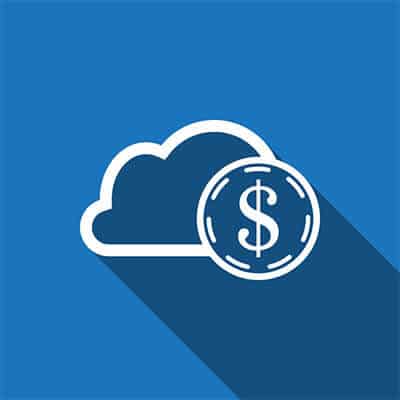Artificial intelligence has gone through several developments in recent years, and with these developments come many concerned workers who think they might be out of a job as a result. With AI now moving into more practical and usable mediums, like writing, these fears are only reinforced and perpetuated by the Turing Test, which can measure the intelligence of a computer.
Businesses have been taking advantage of the cloud for some time now, and nine out of ten businesses operating today are using the cloud’s capabilities in some way or another. We feel confident enough to say that the future will certainly involve cloud hosting. Let’s look at some of the statistics and business trends to see how far the cloud has come, and how you could be taking advantage of it if you aren’t already.
Outsourced IT services are a very popular option for modern businesses, with options ranging from fully managed services to the traditional break/fix approach. However, when weighing these options, it is only natural that price plays a heavy part in the considerations. While we won’t go into any precise pricing, we do want to discuss some overarching trends concerning the two options and their associated costs to prove that managed services are, in fact, the better option for modern businesses.
The cloud is undeniably a useful approach to technology, for reasons ranging from its accessibility to its scalability to its purported cost efficacy. Why purported? Well, there are hidden costs that can very well impact whether or not the cloud is your best option.
Use More than One Monitor The first way you can go about cutting down the need for paper copies is by expanding your display space. By utilizing a dual-monitor setup you no longer will have the need to have printed copies of information to efficiently work on your computer. Anytime you have to work with multiple documents, you can just pull them up on the screen(s). Use Application-Based Options For every business need there is an application that can help make the task a bit easier. There are applications developed to cut out the need for paper copies of anything. Cloud platforms especially provide the ability for people to collaborate right alongside each other, removing entirely the need for paper copies of projects. Note taking applications also provide a solution for people that often need to take notes. Put Print Policies in Place With the use of solutions aimed to limit the need for paper, you can then go ahead and put in strong printing policies that work to reduce the access to printers. By putting in a necessary authorization platform between your network and your printers, you can substantially limit the access to the printer or copier, reducing the need for paper and ink/toner. You can also employ certain strategies such as using both sides of a piece of paper to print on, adjusting your fonts to produce less prints, and more to reduce the amount of paper you use. Simply put, you won’t see as much cost benefit if you continue to use the same amount of ink/toner. Digitize Your Backups Not being able to find an important file is very frustrating, which is why many businesses still use physical file folders and print off hard paper copies to store in them. All those extra steps to file away documents adds up to extra expense. By digitizing your data and storing it in the cloud, you not only have access from anyplace on nearly any device, but you also have copies that won’t be lost, moved, or stolen. Your data will be where you put it, in perpetuity. If you would like to get out from under the expansive costs that printing brings onto your business, call the IT professionals at SRS Networks today at (831) 758-3636. Our technicians can start you on your way to a paperless office as soon as today.
The cloud has proven to be an extremely useful tool for the modern business. Not only does it provide anywhere-anytime access to applications, processing, storage, et al; it also delivers those products as a service, allowing you to budget for recurring costs rather than major upfront ones. This provides your organization with functional, supported, and secure computing environments that eliminate a lot of the support costs that traditional computing environments require. It sounds like a perfect scenario for small and large businesses alike, but things aren’t always what they seem, as a lot of cloud users have found that they have incurred several hidden costs by using cloud platforms. Today, we take a look at these hidden costs.
Experience and Qualification Don’t Always Go together consider the regular duties of an internal IT department. Unless the business in question is doing a few things very wrong, the IT department probably isn’t putting out major fires on a regular basis, either literally or figuratively. Furthermore, consider the possibility that, while your internal resource is experienced in a particular version of some process or solution, what about the new versions that they have yet to encounter? When the time comes to implement these later versions out of necessity, your internal IT resources will be unfamiliar with them, essentially starting at square one. On the other hand, an MSP is much more likely to have dealt with major issues more often than an internal resource may have. This is because they will have been monitoring the network systems of numerous clients in order to protect them, rather than monitoring a single organization’s resources. This means that they are statistically more likely to have to deal with new issues than a single internal team might. For similar reasons, they are much more likely to be educated in more up-to-date solutions, as their variety of clients are more likely to have different versions of a wider range of programs put into place. An MSP Allows Their Clients to Be More Competitive One of the most clear benefits of outsourcing is the fact that it frees your internal employees to accomplish other things that will advance your business. This doubled productivity can have a few effects on the SMB in question. First, outsourcing allows much of the same progress to be made on a project for comparable, if not lower, costs than it would take for an internal team to dedicate their time to the same project. As a result, the SMB can become more competitive by offering their clients a relief from these costs. Plus, by utilizing an MSP, an SMB can often take advantage of technology services that would otherwise only be available to large corporations. In doing so, that business can leverage the same tools to provide comparable services on a more personal level, encouraging their prospects to go to them first. Security, Risk Management, and Compliance are MSP Priorities A business could be very easily crippled if they experienced a data leak that allowed their customers’ data to fall into the wrong hands. In response to this, businesses are held to a variety of standards that they must be faithful to in order to accept digital forms of payment. An MSP’s services include ensuring that a business is fully secured and in compliance with these mandated requirements. Additionally, a managed service provider can help protect a business from internal risks as well. Through the monitoring of the business’ systems, an MSP can identify potential issues and resolve them before they negatively impact the business. These were just a few brief examples of how outsourcing some IT responsibilities to a managed service provider can benefit your business in the short and long term. For more information, reach out to us at (831) 758-3636 to talk about solutions for your Business.
Saving a little on your technology can go a long ways, but cutting too many corners can lead to additional problems and expensive downtime. Here are a few ways you can cut costs without creating long term issues.
Sometimes when your workstation feels bogged down, a relatively cheap and simply hardware update can make a huge difference in performance. Adding more RAM (Random Access Memory, often just referred to as memory) can be a game changer for your bogged down PC.









